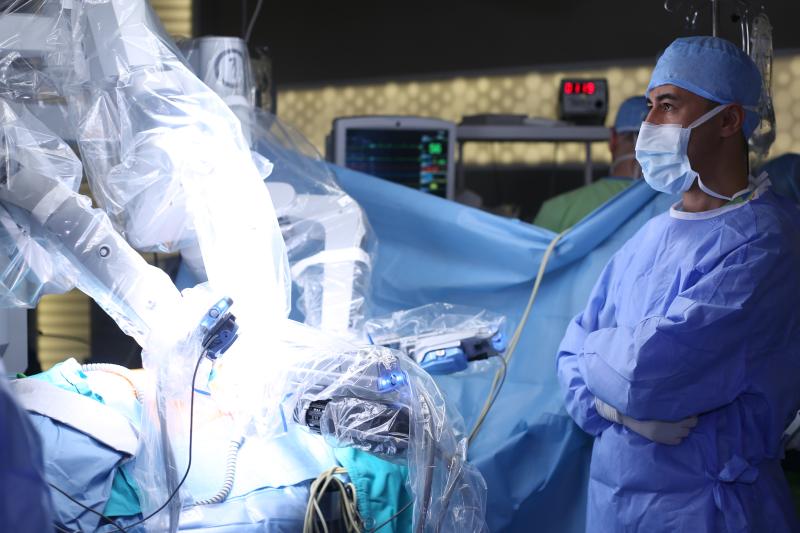
Robot-assisted radical cystectomy (RARC) is comparable to open radical cystectomy (ORC) in terms of recurrence and 3-year overall (OS) and progression-free survival (PFS), highlighting the oncologic equivalence of these two approaches, according to the results of the Randomized Open versus Robotic Cystectomy (RAZOR) trial.
This finding “provides prospective data on which physicians can base a discussion with [bladder cancer] patients before selecting a surgical approach,” the researchers said.
The RAZOR study included 302 patients. Nonbladder cancer death was used as the competing risk event to estimate cumulative recurrence, and Gray test was applied to evaluate significance in differences. PFS and OS were estimated using the Kaplan-Meier method and were compared via log rank test. Cox proportional hazard analysis was performed to determine the predictors of outcomes.
At 36 months, estimated PFS was 68.4 percent (95 percent confidence interval [CI], 60.1–75.3) in the RARC group and 65.4 percent (95 percent CI, 56.8–72.7) in the ORC group (p=0.600). OS at 36 months was 73.9 percent (95 percent CI, 65.5–80.5) and 68.5 percent (95 percent CI, 59.8–75.7), respectively. No significant between-group difference was seen in the cumulative incidence rates of recurrence (p=0.802). [J Urol 2020;203:522-529]
Similar survival outcomes were also noted in previous studies of RARC and ORC. For instance, Stein and colleagues reported 68 percent relapse-free survival and 66 percent OS in patients treated with ORC, which worsened with increasing pathological T stage and lymph node positive disease. [J Clin Oncol 2001;19:666-675]
In the present study, median time to recurrence was 6.3 and 10.2 months in the ORC and RARC groups, respectively. Overall perioperative chemotherapy rates were comparable in the two groups, but in RARC, adjuvant therapy was more common (16.8 percent vs 11.3 percent; p=0.176) while neoadjuvant therapy was less common (27.5 percent vs 36.7 percent; p=0.09).
“This may account for some of the difference in time to recurrence,” the researchers explained.
The significant predictors of 36-month PFS were major complications, poor performance status and patient age >70 years. Stage and positive margins significantly predicted recurrence, PFS and OS. On the other hand, surgical approach did not significantly predict any outcome. Although blood transfusion had been shown to correlate with worse oncologic outcomes, it did not significantly predict PFS or OS on multivariate analysis in the present study.
“These data offer high quality evidence from a randomized study to support the similarity of oncologic outcomes of the two approaches,” the researchers said.
Certain limitations must be acknowledged in this study. The RAZOR trial was designed to prove the noninferiority of 2-year PFS for RARC vs ORC, but other oncologic outcomes such as recurrence rates and OS were also reported here.
In addition, “[a]ll oncologic outcomes were comparable in the two groups, providing high quality, prospective evidence of the oncologic efficacy of robotic cystectomy,” the researchers said. “Whether chemotherapy was performed was left to physician discretion at individual sites since it was not part of the protocol.”